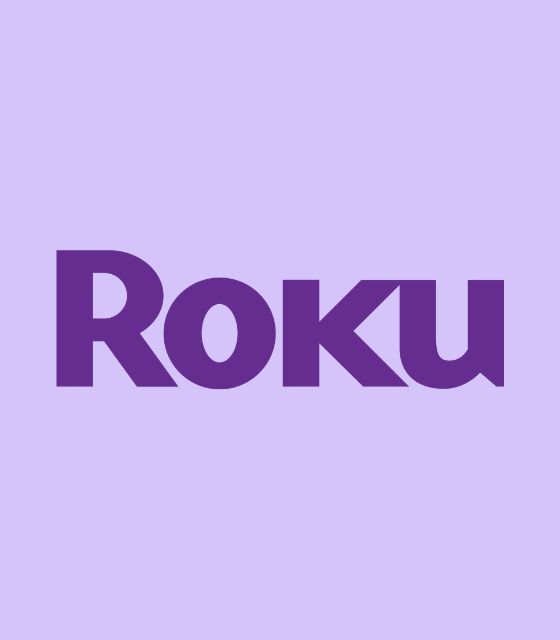(Updated on September 2024)
Does your digital marketing mix include native ads? Native advertising is a proven method for capturing consumer attention. In this guide, we will break down everything you need to know about Native advertising so that you can get started with your own native ad campaigns.
What is native advertising?
Native advertising is a type of paid advertising in which ads match the content, visual feel, and form of media they appear in. Basically, it is digital advertising that blends in seamlessly with its environment- web, social media platforms, or any other format online. The concept of native advertising encourages user’s accept the content that belongs in-stream. Instead of sticking out like a sore thumb, native ad formats ensure readers feel that the promotional information is a natural part of their content consumption experience.
Although they can technically appear in any medium, native ads are most often found in social media feeds, web pages, and search engines. Wherever they live, all native ads share the trait of “not looking like ads,” instead choosing to emulate the media they inhabit. They are usually highly focused on light-touch content and awareness rather than hard selling. Some of the popular types of native ads include:
- In-feed ads: These are ads that appear on social or news networks when you are scrolling. It could be Facebook, Instagram, TikTok or Twitter. They merge with your feed easily and engage the reader. They are great for increasing click-through rates to offsite destinations.
- Sponsored content: These native ads could be blog posts, videos, articles, infographics, or any form of content appearing on publication or platform feed.
- Promoted listings: Any ads – audio, image, text, or video – that appear at the top of search pages you are browsing are promoted listings. These ads are attractive as they appear in front of users who have a high purchase intent.
- Recommendation widgets: These ads appear on any website and recommend relevant products or content to improve user engagement and experience. They may lead a user to a destination on that site or platform or to an offside experience.
- Paid search ads: These are text ads that are activated with relevant keywords to drive traffic and clicks.
Why native advertising works
- Attention: Like many advertising concepts, Native advertising is backed by hard data. Consumers look at native ads 53% more than display ads, and native ads create an 18% increase in purchase intent (Source: Outbrain). In an industry where an increase of 1% in email click-through or social media engagement rates is considered a huge success, native advertising boasts an incredible advantage over more traditional ad formats.
- Consumer trust: Native advertising also has the benefit of fostering increased trust. A third of consumers were more likely to trust native advertising than traditional advertising, and clicking on a native ad driver on a premium content website had a more significant impact than clicking via Meta (source: Native Advertising Institute).
- Interest: Native advertising also alleviates what advertisers call “ad fatigue” –when consumers become bored and disinterested from seeing too much overt advertising during their day. Native ads usually consist of editorial content instead of “hard-selling”, so they have a greater ability to engage consumers, provided the content is relevant and interesting.
- Non-interruptive: Native advertising is essentially non-invasive or interruptive as the style and format blends in with its surrounding content. This boosts engagement and ensures higher quality traffic. You can also include commercial content here on social platforms in a native content format.
Native advertising vs. content marketing
Although native advertising sometimes employs content marketing to blend in and appear more “native,” these two concepts are often erroneously used interchangeably. While both native advertising and content marketing employ a softer approach than traditional selling, native advertising is best understood as a concept, while content marketing is a tactic.
As we have learned, native advertising refers to any form of advertising which emulates the format of its environment through an in-stream delivery that does not interrupt a user’s experience. Native ads can include branding, product promotions, or any advertising message.
On the other hand, content marketing is a form of marketing that focuses on creating and delivering shareable marketing materials like blogs, videos, newsletters, whitepapers, social media posts, and podcasts to establish trust and authority in a given market. It can be promoted through paid advertising, like native, but doesn’t necessarily have to.
Why use native advertising?
In case you aren’t already convinced, here is some more data on native advertising and native ad platforms and why you should include it in your digital marketing mix:
- Native display ad spending in the US is expected to grow 12.5% year-over-year in 2023, reaching $98.59 billion (source:eMarketer).
- 68% of consumers trust native ads seen in an editorial context, compared to 55% for social media ads (source:Outbrain/Sevanta).
- The Native Advertising sector is estimated to be worth $400bn by 2025 (source:The Drum).
- Engagement rates are 20 to 60 percent higher on native ads than on banners and drive retention rates that are 3x higher (source:MarTech).
Three real-life native advertising examples
Buzzfeed – Miracle-Gro

This native campaign is incredibly interactive and features an AI-powered song generator for plants by Miracle-Gro, a plant product brand. Readers can get a song customized for their plant which creates a positive association with the brand and makes it stick out in their mind in a crowded field of gardening products.
Wall Street Journal – Netflix

The Wall Street Journal’s native ad for Narcos – the Netflix series – engages readers with information on the economics of cocaine production and its impact globally.
Reddit – Huel

Reddit is a popular social network built on the foundation of discoverability and user generated content. Because of the niche content on the site, native ads are often placed accurately to drive action. The r/Fitness page has a promoted post by a protein company, Huel. The ad blends so well with the other posts and draws attention from the right audiences..
Native advertising best practices
Now that the benefits of Native Advertising have been firmly established, let’s look at some best practices to keep top of mind for success when implementing native advertising campaigns.
- Understand the target audience: For any form of native advertising, it is important to understand the target audience: the pain points, needs, uses, and general persona. This target audience needs to be the center of all content efforts. Conducting surveys, persona research, and more can help marketers learn more about the target audience.
- Choose interest over interruption: Native ads are delivered in-stream and featured in a way that does not disrupt the user’s experience of the platform or the media itself. The power of native advertising is diminished when the ad itself is highly disruptive! As an advertiser, one must change their approach from “what would elicit a sale from my target audience” to “what would my target audience find interesting or entertaining”? Creating high-quality content that seeks to entertain or inform will help marketers generate the most impact with their next campaign.
- Focus on content: Although content marketing is not the same as native advertising, the two complement each other. Blog articles, podcasts, and entertaining videos are just a few of the content marketing tools at a marketer’s disposal when it comes to creating eye-catching native ads.
- Test everything: Begin with a clearly defined goal, as well as a testable hypothesis. This can be as simple as “smaller text is always better.” Many advertisers choose to test only two variations through a concept known as A/B testing: they test their original ad against a new version that is different in some way instead of running three or more ad variations simultaneously. The original ad or “control” performs an essential function because it is the baseline that determines whether further experimentation is a success or failure. Once the test is run, the only thing left to do is decide which version of the ad to continue using based on the results.
Native advertising: Concerns and obligations
Native advertising is not a perfect science and comes with some issues that all advertisers must consider. Namely, there is some debate around the potential for native ads to blend into their target environments so well that audiences feel as if they’re being misled. One study found that fewer than 1 in 10 people could distinguish “online sponsored content” from news articles (source: Phys.org).
- Finding the balance between the interests of publishers and a marketer’s goals; create content and ads that are of value to users and align with the overall tone and style of the website.
- Failure to comply with legal, data privacy, and ethical standards such as GDPR in Europe, FTC and CCPA in the U.S. It is important to maintain transparency and state that they are viewing an ad.
Journey advertising: The future of native?
According to our own Chief Strategy Officer, Seraj Bharwani, “Journey Advertising is a brand’s ability to reach consumers at key moments along the journey with relevant content and creative messaging to achieve mutually beneficial outcomes.”
Native ads often do just that: they meet audiences at key moments during their journey, seeking to provide value instead of a quick sale. Looking at one’s next native advertising campaign as a journey will help reveal the entire consumer relationship as a connected pathway instead of a final destination.
It is a conceptual framework that you can use to take your native ads to the next level. Learn more about journey advertising here.
Start your Native Advertising campaign today
illumin is more than just a native advertising platform. It lets you harness the power of Native Advertising along a connected journey, allowing you to control ad creative and frequency at each stage and discover the most effective route to conversion. Find out how our connected canvas helps marketers place native ads across the consumer journey where they make the most sense.

To see more from illumin, be sure to follow us on Twitter and LinkedIn where we share interesting news and insights from the worlds of ad tech and advertising.











